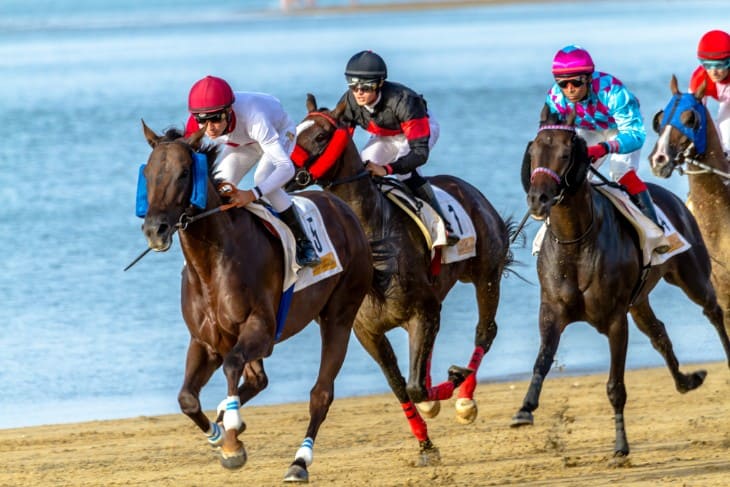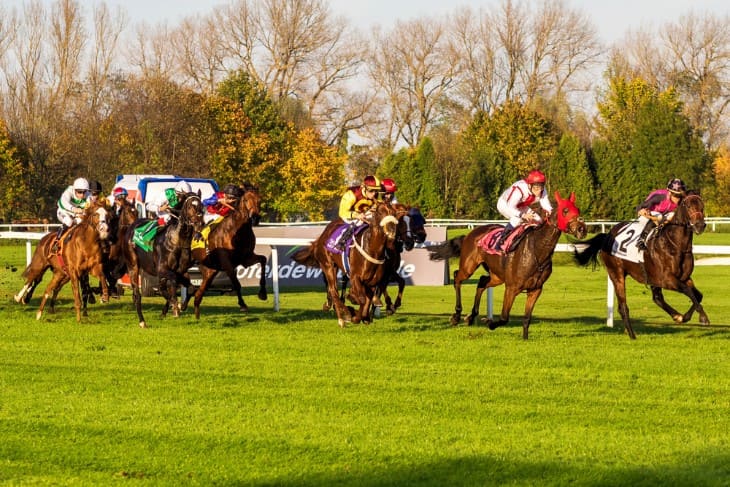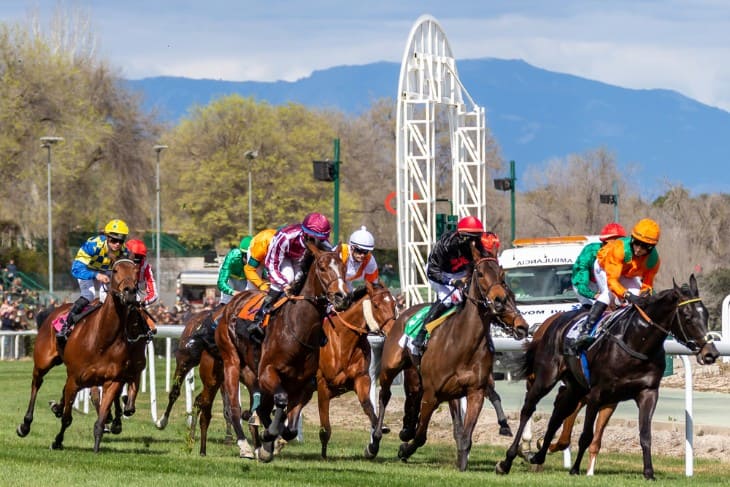Horse racing fans and bettors are always looking for an edge that will increase their chances of winning. "Positional Betting" is one of the strategies that have become popular for its efficiency, meaning it can transform your horse racing wagers into calculated and strategic investments.
Understanding Positional Betting Basics
Positional betting is not just a strategy but a game-changer. In simple terms, positional betting involves staking bets on horses based on their positions during a race. It differs from traditional gambling whereby you simply place a bet on the winning horse; positional betting allows you to diversify your bets by examining a horse’s position at different points in the race.
Explaining the Stages of Horse Racing
To understand positional betting, one must first comprehend the key stages of a horse race. These stages include the start, middle and final stretch of typical races.
The Start – Assessing Early Momentum
The start of any horse race sets the pace for the entire event and is an important aspect of Positional Betting. It's within this stage where early momentum has to be evaluated.
Simply put, some horses are very quick out of the gates in any given field. They want to take advantage of early running by sprinting away.
As someone practising positional betting, you're trying to identify horses that suggest great starts are possible with them. It is similar to investing in highly volatile stocks on Wall Street—you anticipate these shares will maintain or build upon their initial good showing through the first part of the race.
Assessment includes studying how quick off gates they've been historically as well as understanding their style of racing. Some horses have been known to lead throughout while others tend to fall behind right after kick-off.
Alternatively, one might also consider expert analyst comments and pre-race discussions which often highlight fast-starting horses who can finish strongly over shorter trips too. Additionally, keep an eye on how skilled or experienced jockeys are when handling such scenarios at the beginning.
When you bet on a horse that is known for being fast off the mark, you’re essentially investing in its ability to grab an early lead. It is a strategic move when using positional betting where you place bets on good beginnings that could eventually result in high returns.
The Middle - Coping with Changing Dynamics
The middle phase of any horse race marks a change in its flow and it’s also one stage of Positional Betting that cannot be ignored. At this point of the race, horses which were not among those leading can start making their move.
In simple terms, some horses save energy for later stages after starting slowly. This tactical transition can make all the difference in Positional Betting.
As a bettor, it is important to adjust accordingly and recognize these changes. The aim herein is to spot horses that have done well during the middle part of their races before. Though they may not take an initial lead, these are horses capable of rallying back into contention.
To shine in this respect of Positional Betting, it is important to keep an eye on the running style of each horse. Watch for situations where in their past races they have demonstrated some amazing middle-distance surges. These include factors such as the staying power of the horse, previous performances on similar tracks, and the jockey's ability to control speed.
Similarly, positional bettors diversify their bets according to the horses' mid-race potentials, just like investors dilute or hedge their risks by distributing them across multiple portfolios. This enables you to adjust your strategy along with the dynamics of the race and place bets that can result in successful outcomes.
I may decide at this point whether I should just stick with my original selection or change my betting strategies based on developments on race day which could be due to various reasons including changing dynamics during the middle stages of a race. It's about identifying horses that can produce strong mid-race bursts and staking your money strategically to benefit from placing a wager on them.

The Home Straight – Betting for Late Sprint
This is usually the most interesting part of horseraces; hence it offers a superb chance for positional making stakes. Among these tactics is staking for closers.
That said; there are those horses that will not even feature prominently within the first half-mile nor make any significant moves during middle stages, but always put up one hell of a finish by coming from off-the-pace. Powerful finishers are those types of horses who can turn around results in only moments left before the end of racing.
However, as a positional bettor, you will be interested in hearing about these powerful finishers although they may be overlooked during the early parts and mid-stages because they always seem to find another gear when needed most at crunch time.
In deciding strong closers one needs to pay attention to their past performances and track records. This would include looking at races where they exploded through in the last furlong or so. Considerations such as a horse’s stamina, late-race speed and a jockey who can take it home.
When you back a strong closer in betting, you are mainly banking on their ability to finish with an acceleration burst. In positional betting, this is considered a tactical move that depends on its ability to reliably and consistently finish high which may be fruitful for your investment.
In summary, The final stretch of a horse race is usually where strong finishers excel and is a place where bettors practising Positional Betting earn profits from their potential. All about this lies in finding these horses and putting your money in the right position by leveraging their closing speeds for a successful bet.
Positional Betting Strategies
Having gone through the stages of any horse race, let us now look at some Positional Betting Strategies that are bound to give you an upper hand when making your wagers.
The Early Bird Strategy
Positional Betting has the Early Bird Strategy which focuses on those horses in racing that have great first section speed. This approach seems similar to investing in high-risk but high-yield assets.
- Locating Early Speedsters: To implement the Early Bird Strategy, we need to locate early pace-setters. With fast starts off the gate, they aim at taking the lead immediately. They are like shares with potential for rapid growth that an investor can identify.
- Analysing Past Performances: This strategy requires scrutinising the horse’s past performances. Seek out races where the horse has been a consistent frontrunner or kept a strong position early on. It is like examining a company’s financial reports before investing, only this time it is historical data.
- Understanding the Jockey's Role: The Early Bird Strategy starts with a jockey. A good jockey can make sure that his horse blasts out of the gate and uses its speed to its advantage. When you evaluate an early momentum manager at your firm, consider the expertise and track record in handling such jockeys.
- Managing Risk: As much as high profits are promised by the Early Bird Strategy, it carries more risks also. Horses having early speed may fade as they race which is a reason why these are very critical to manage while diversifying an investor`s portfolio stretches risk across the financial market.
- Strategic Betting: Once you identify horses which have some speediness within them and rate those that potentiate their lead, then you can strategically bet for them. You are putting your money on whether they will keep their noses in front until after crossing the line. Like buying growth stocks; all you are doing is placing bets on how well they start.

The Mid-Race Surge Strategy
The Mid-Race Surge Strategy is a key element of Positional Betting, focusing on horses that tend to make their moves in the middle stages of a race. This strategy is similar to diversifying your investment portfolio to balance risk and reward.
- Identifying Mid-Race Surges: To implement the Mid-Race Surge Strategy, you should identify horses known for their strong performances in the middle stages of races. These horses may not lead early on, but they have a history of making significant moves as the race progresses.
- Analysing Past Performances: Studying a horse's past performances is crucial in this strategy. Look for races where the horse has showcased its ability to surge ahead in the middle stages. This historical data is your equivalent of analysing a company's growth potential before investing.
- Assessing Stamina and Strategy: Factors like the horse's stamina and its jockey's strategic decisions during races. Horses with the ability to maintain their pace and jockeys who know when to make their move are key components of successful Mid-Race Surge Betting. It's like evaluating a company's fundamentals and management strategy.
- Diversifying Bets: The Mid-Race Surge Strategy encourages diversifying your bets based on horses' middle-stage potential. Just as in financial markets, diversification spreads risk. You're not relying solely on early speed; instead, you're betting on horses that can adapt and perform well as the race unfolds.
- Strategic Timing: When employing the Mid-Race Surge Strategy, timing is critical. You need to place bets at the right moment, anticipating when the chosen horse is likely to make its move. It's similar to buying stocks when they are poised for growth and making strategic investment decisions.
The Strong Finisher Strategy
The Strong Finisher Strategy is a valuable component of Positional Betting, focusing on horses with a reputation for strong finishes in horse races. This strategy is akin to investing in assets with a reliable history of consistent growth.
- Identifying Strong Finishers: To implement the Strong Finisher Strategy, you should identify horses known for their ability to close races with a burst of speed in the final stretch. These horses may not have a significant early lead, but they have a track record of finishing strong.
- Analysing Past Performances: Studying a horse's past performances is crucial in this strategy. Look for races where the horse has consistently displayed its strong finishing abilities. This historical data is your equivalent of analysing the historical performance of stocks before investing.
- Evaluating Stamina and Late-Race Speed: Consider factors such as the horse's stamina and its ability to accelerate in the late stages of a race. Horses with the capacity to maintain energy for a strong finish are key components of successful Strong Finisher Betting. It's like assessing an asset's ability to perform well in the long run.
- Strategic Betting: When employing the Strong Finisher Strategy, you're essentially betting on a horse's ability to close the race with a burst of energy. This strategic move in Positional Betting is similar to investing in assets with a consistent history of growth. You're banking on a reliable and powerful finish.
- Timing Your Bets: Timing is critical when using the Strong Finisher Strategy. You need to place your bets at the right moment, anticipating when the chosen horse is likely to unleash its finishing speed. It's akin to investing in assets at the opportune time for maximum growth potential.
In Summary
Positional Betting offers a strategic approach to horse racing that allows you to make calculated bets at different stages of the race. By understanding the dynamics of each stage and employing Positional Betting strategies, you can enhance your chances of winning and make your betting experience more rewarding.
Just as investors diversify their portfolios, bettors can diversify their bets using Positional Betting to achieve a balanced and strategic approach to horse racing wagering. So, why stick to traditional betting when you can elevate your game with Positional Betting?








